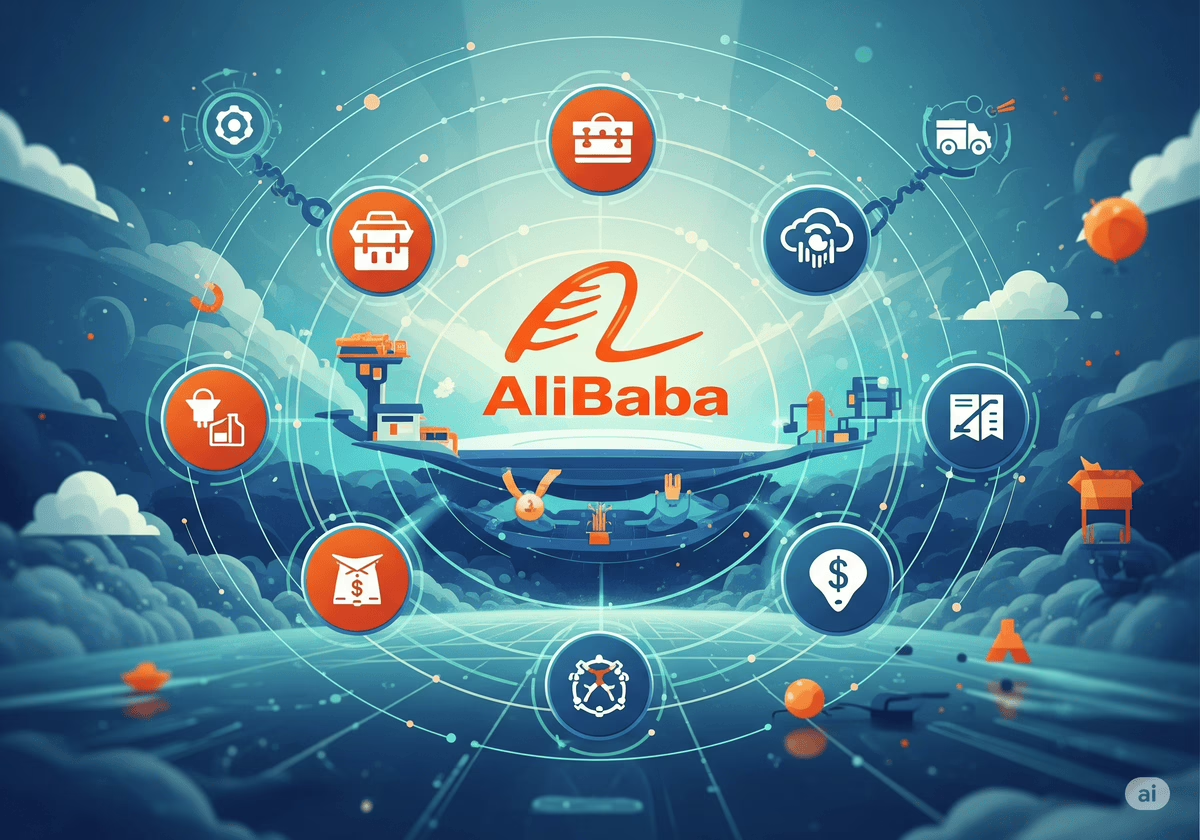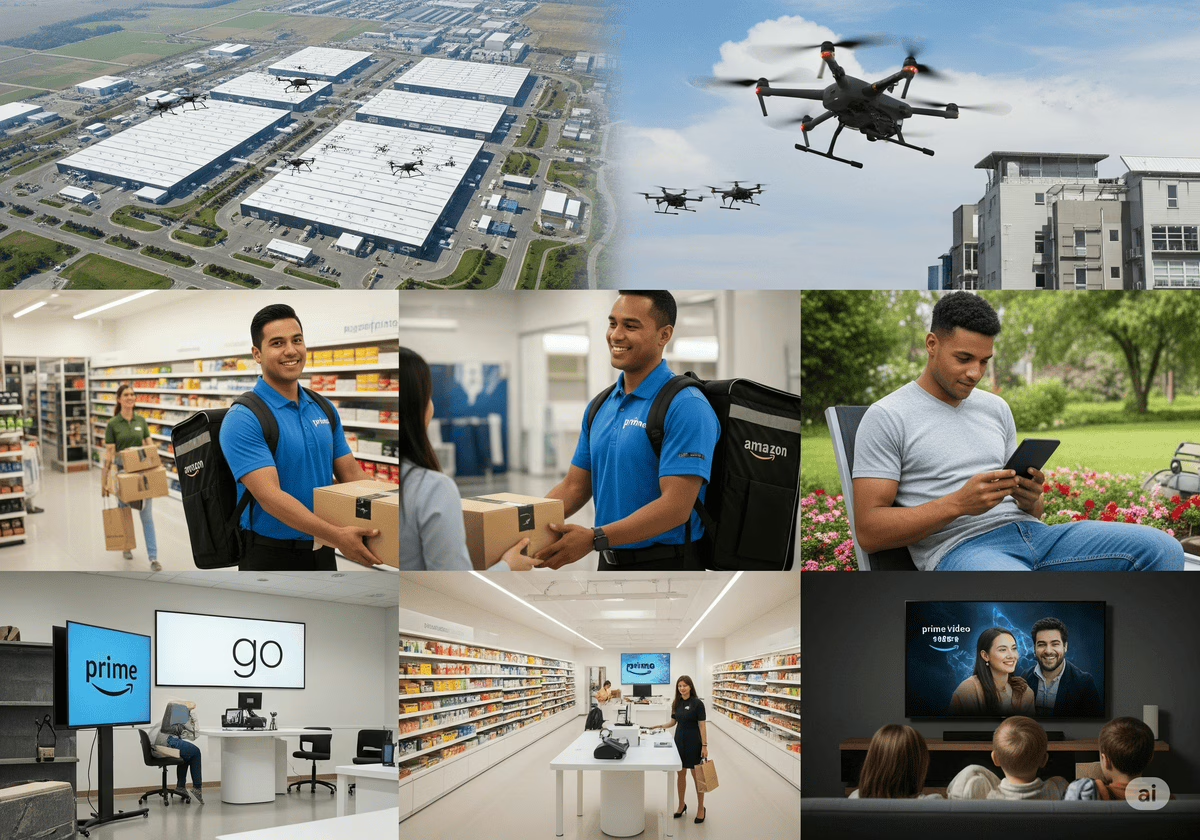My portfolio consists of mostly mega-cap tech and one industrial commodity play to match my goal of investing in high growth companies that compound their invested capital at high rates.
This review dives into the composition, risk factors, potential opportunities, and strategic considerations for my stock holdings in Meta Platforms (META), Alibaba Group (BABA), Warrior Met Coal (HCC), Amazon (AMZN), and Alphabet (GOOG). I will analyze each individual holding and provide insights into these companies based on current market dynamics and future outlook.
These types of reviews are a necessary portfolio health check up, so let’s get into it.
Portfolio Composition
As I stated above, my portfolio currently comprises a mix of technology giants (META, AMZN, GOOG), a leading Chinese e-commerce and technology conglomerate (BABA), and a US-based metallurgical coal producer (HCC) as of writing this article. This blend represents exposure to high-growth sectors, international markets, and cyclical commodities. The allocation across these sectors and geographies will significantly influence the portfolio’s overall risk and return profile.
Meta Platforms (META)
Meta Platforms is a global technology company that develops and operates social media platforms, including Facebook, Instagram, and WhatsApp. They also invests heavily in augmented and virtual reality technologies through their Reality Labs segment.
Meta has a huge family of apps that have billions of active users globally which means a huge audience for advertisers and network effects. They are utilizing AI to assert their dominance in ad targeting and to leverage user data. They are spending a lot of money on the metaverse, AI, and their wearables like AR/VR headsets. You can see their strong results as ad revenue is their top revenue generator hands down.
However this does lead to some headwinds such as being so focused on advertising for revenue. This means any downturn in advertiser spend affects Meta quickly. In addition, there is regulatory scrutiny on big tech right now, specifically with Meta and Google. Investors need to keep in mind that user preferences are always changing so competing platforms like TikTok may take hold as the most popular social media app if the user experience is better. Finally, spend on the metaverse continues unabated and the business segment is still operating as a loss in the most recent quarterly earnings.

So how can Meta take advantage of current markets? Well, they can monetize several of their offerings such as WhatsApp and features like Reels. In addition, they can continue to grow into new geographical markets in developing countries. WhatsApp is extremely popular in Brazil and India, so monetization opportunities are huge. They continue to introduce new versions of ocular wearables and they continue to get better with integrations with AI such as Orion. Moreover, integrations of e-commerce within their existing platforms provides a path to driving transaction-based revenues, similar to what Apple did with Apply Pay.
As an investor, I also need to know the risks that could potentially derail a wonderful investment. For Meta, increasing competition is one such risk. The rise of TikTok and X definitely poses a serious threat to Meta, but Meta still has a very competitive platform that individuals and businesses use to advertise and market. Meta created threads to combat written form social media competition like X and so far it has millions of active users. Plus that’s another revenue stream they have not yet monetized. The other major threat is cuts in ad spending. With the majority of their revenues coming from ads, any cuts from ad spending will affect them along with all other advertisers.
Meta’s current price-to-earnings (P/E) ratio stands at approximately 25.12. Investors should consider whether this valuation aligns with the company’s growth prospects, tailwinds, and risk profile.
Alibaba Group (BABA)

Alibaba Group is a Chinese multinational technology conglomerate specializing in e-commerce, retail, internet, AI, and technology. Their primary businesses include Taobao and Tmall (e-commerce marketplaces), Alibaba Cloud (cloud computing), and Ant Group (digital payments, although ownership structure has shifted).
BABA is a strong player in the world’s e-commerce market, basically the Amazon of China. Their cloud business continues to grow and take it’s place in the pantheon of cloud providers such as AWS, Azure and Google Cloud. In addition, BABA has different businesses that create synergies for it’s customers who use their suite of services. Network effects are present within their own ecosystem to ensure that customers get everything they need right within a BABA-based service. The growth of the Chinese economy continues to bolster the online consumption of the Chinese people and provides a significant runway for BABA.
Some things for investors to take note of though are regulatory crackdowns in China. The primary reason that BABA is not valued higher as is US mega-cap tech, is that the government controls businesses to some degree. In addition, there is heightened geopolitical tension right now between China and the US. This will lead to a discount in Chinese companies. Competition is fierce in many of BABA’s business segments both domestically and internationally. Several mega-cap tech companies have cloud services and the e-commerce space is saturated.
BABA has the ability to continue expanding into Southeast Asia and other international markets. Even though cloud services is a competitive industry, BABA continues to develop their services and offer more compelling services now boosted with the advent of AI. In addition, they are streaming and integrating online and offline retail through their new strategy to drive growth. Alibaba has invested into several AI businesses to continue leading the AI revolution.
Alibaba’s P/E ratio of around 16.63 might appear attractive compared to their historical levels and some of their global peers, but it reflects the increased risk premium associated with Chinese tech stocks.
Warrior Met Coal (HCC)
Warrior Met Coal is a US-based producer and exporter of high-quality metallurgical coal, primarily used in the steel production process. I will go more into Warrior Met Coal in some of my upcoming videos, but it is good to highlight strengths and weaknesses.
Strengths
- High-Quality Metallurgical Coal: Warrior Met Coal mines hard coking coal which is essential for steelmaking.
- Strong Export Demand: A significant portion of their production is exported, benefiting from global demand for steel.
- Experienced Management Team: The company has a track record of efficient operations and financial management.
- Potential for Increased Infrastructure Spending: Government initiatives focused on infrastructure development globally could increase demand for steel and, consequently, metallurgical coal.
Weaknesses
- Cyclical Industry: The coal industry is highly cyclical and sensitive to global economic conditions and steel demand.
- Environmental Concerns: Coal production and consumption face increasing environmental regulations and pressure to transition to cleaner energy sources.
- Labor Relations: The coal industry can be prone to labor disputes, which can disrupt production and impact profitability.
- Geopolitical Risks: Trade policies and international relations can affect the demand for and pricing of metallurgical coal.
Opportunities
- Increased Demand from Developing Economies: Growing industrialization in emerging markets could drive higher steel production and coal demand.
- Supply Constraints in Other Regions: Production issues in other coal-producing regions could lead to higher prices for Warrior Met Coal’s product.
- Technological Advancements in Steelmaking: New steel production technologies that still rely on metallurgical coal could sustain demand.
- Carbon Capture Technologies: If carbon capture technologies become economically viable for coal-based steelmaking, it could provide a longer-term future for the industry.
The valuation of Warrior Met Coal will be closely linked to commodity prices and the company’s profitability, which can fluctuate significantly. Investors should monitor metallurgical coal price trends, but if you have a long-term investment horizon, then these shares might be attractive with the ramp up in free cash flow coming.
Amazon (AMZN)
Amazon is a global e-commerce and technology company with operations in online retail, cloud computing (Amazon Web Services – AWS), digital streaming, AI, and more. This business model is the de-facto template for companies like Alibaba and others. They are the dominant online retailer in most of the world and have a strong logistics network and membership programs for recurring revenues. Their business segments are so varied including e-commerce, cloud, advertising, subscriptions, physical retail and more. With their vast revenue streams, they are able to plow all that money back into the business to reinvest which drives their AI and other research and development growth.

AI Generated AMZN Services Image
But what are some drawbacks of this behemoth? Well, just like other big tech, there is always an overhang of regulatory oversight. They have a high overhang due to maintaining a massive logistics network and investing in new growth opportunities. What this means for investors is very little to no cash return on their shares by way of dividends and such. However, the appreciation of the shares has been massive over the years due to the reinvest of capital back into the business. Additionally e-commerce can be seasonal and relies heavily on consumer spending which can be tough in a recession or recessionary environments.
However, Amazon will continue to grow in e-commerce as the trend for online shopping will continue to grow with younger and younger shoppers hitting the total addressable market. They have the first-mover advantage with AWS which they will continue to expand and grow using AI to leverage tools and services. Their advertising business is growing rapidly because they are able to leverage the vast user data they have from years of spending on their platform. Finally they also continue to spend and invest in new business areas like healthcare, autonomous vehicles and emerging tech like quantum computing.
- Opportunities:
- Continued Growth in E-commerce: The shift towards online shopping is expected to continue, providing further growth for Amazon’s retail business.
- Expansion of AWS: The cloud computing market is projected to grow significantly, offering substantial opportunities for AWS.
- Growth in Advertising: Amazon’s advertising business is rapidly expanding, leveraging their vast user data and e-commerce platform.
- New Business Ventures: Amazon continues to explore and invest in new areas like healthcare, autonomous vehicles, and other emerging technologies.
- Risks:
- Increased Competition in E-commerce and Cloud: Competition from other large tech companies and niche players could erode Amazon’s market share.
- Economic Recession: A significant economic downturn could reduce consumer spending and negatively impact Amazon’s retail and advertising businesses.
- Supply Chain Disruptions: Global supply chain issues could impact Amazon’s ability to fulfill orders and increase costs.
- Labor Issues: Labor shortages or increased labor costs could affect Amazon’s profitability.
Amazon’s valuation, while high on a P/E basis, reflects their strong growth potential and market leadership across multiple sectors.
Alphabet (GOOG)
Alphabet is the parent company of Google, which dominates the online search and advertising markets. Their other ventures include Waymo (autonomous vehicles), Verily (life sciences), and Google Cloud. GOOG is the dominant search engine much the same way AMZN is dominant in e-commerce. This has led GOOG to have a very strong advertising revenue stream from the large volume of search traffic going through it’s platform. In addition, Android is the most widely used mobile operating system in the world. Moreover, GOOG is innovating and integrating AI with their Gemini models with all their other services like YouTube and Google Cloud to name a few. There are numerous other advancements and token pieces in Alphabet’s collection – Waymo, quantum computing, etc. etc.

There are several things to be wary of if you are a prospective or current investor. Regulatory scrutiny around Alphabet is omnipresent and most likely the reason for the continued discount of company shares. Regulators argue that Google has been operating as a monopoly in search and are looking to break up Search and Android from the business. While this would take years of legal battles, the threat is still there. In addition, this highlights their reliance on search advertising revenue which was the majority of their revenue as of the latest quarter.
However, the benefits of owning Alphabet are clear – massive growth in advertising, cloud, emerging tech, YouTube, Waymo, quantum computing, AI integrations and much more. Thus, I’m not too worried with the regulatory overhang. It may be that if Alphabet is forced to break up, then it unlocks even more value for shareholders in the long run.
Alphabet’s P/E ratio of around 18.44 reflects strong profitability and growth prospects, although regulatory risks warrant consideration.
Conclusion
Overall I’m happy with my allocations to these companies due to a combination of their high growth, excellent industry positioning, economic and business factors and more. I will continue to review my portfolio from time to time and especially as I add new names to this public portfolio.
Disclaimer: This portfolio review is for informational purposes only and should not be considered financial advice. Investment decisions should be based on your individual financial situation, risk tolerance, and investment goals, and after conducting your own thorough due diligence or consulting with a qualified financial advisor. The stock prices and market capitalizations mentioned are as of the specified date and are subject to change. Analyst price targets are based on available data and may not be realized.




